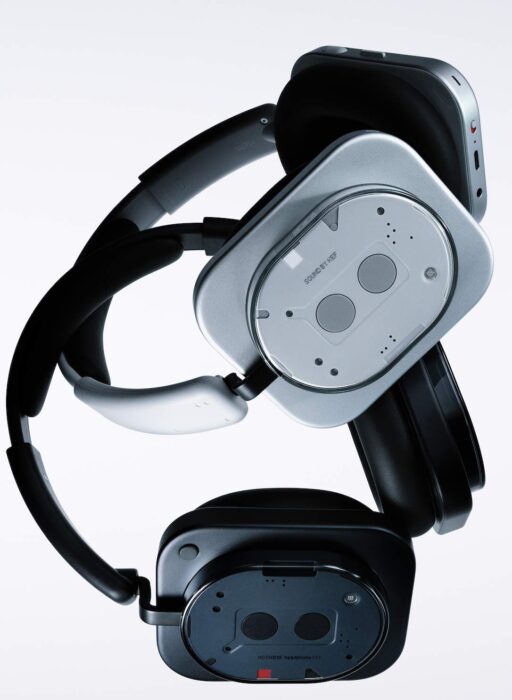The Article
ELEVATOR XP STEP UP FROM GRAHAM SLEE
30th May 2024
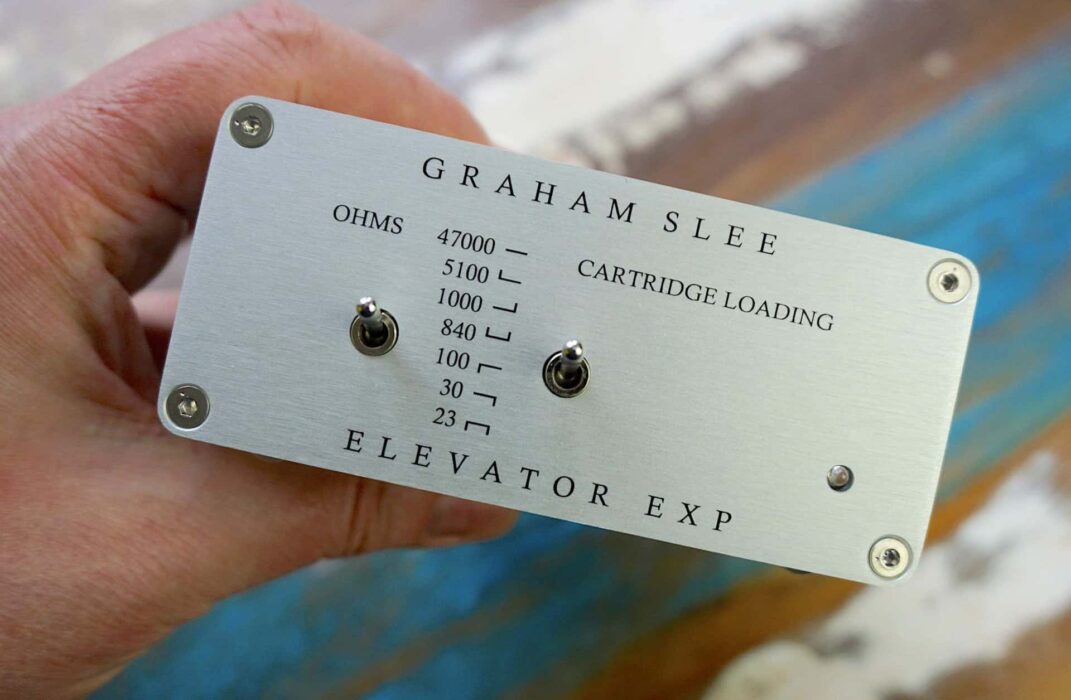
Looking to upgrade your moving magnet phono amplifier to moving coil? Paul Rigby checks out a Step-Up amplifier from Graham Slee that may just be the answer
When turntables, vinyl and the support of phono amplifiers are discussed, step-up units often are part of that conversation. They exist to connect to a moving magnet phono amplifier. Why would you want to do that? To upgrade that moving magnet phono amp, to enable it to support moving coil cartridges.
THE BASICS
Why is a Step-Up unit necessary in the first place? Because the output signal from a moving coil cartridge is so tiny, a Moving Magnet phono amplifier just can’t cope. You could try, you could put in the request sure, but your moving magnet phono amp would just throw up its hands, turn its back on you, walk out the door and spend the rest of the afternoon down the pub.
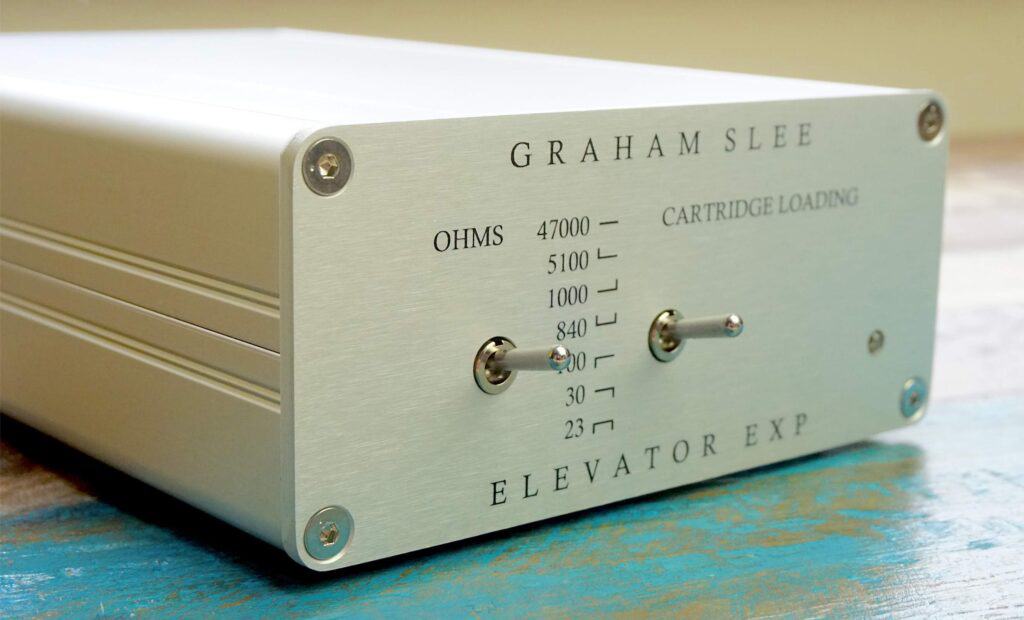
Frankly, your moving magnet phono amplifier can’t do the job on its own. A step-up amplifier is designed to amplify those tiny Moving Coil signals.
Being able to connect a step-up amplifier to your beloved moving magnet phono amp is useful because it means don’t have to bin that moving magnet box. You get to keep it and enhance it all in one go.
Step-Ups are also useful for a second reason. One I hope to investigate in this review. They should help to lower the noise floor.
Allow me to explain. Say you bought an all-in-one phono amplifier that contains both the moving magnet and moving coil models in one chassis. You know the type I mean, you just flick a switch to move from moving magnet to moving coil and back again. Most phono amplifiers are built like that because you need just the one box, the footprint is small, costs are reduced…all that. Problem is, in broad terms, a moving coil module is pretty noisy. It’s noiser than the moving magnet part, at any rate.
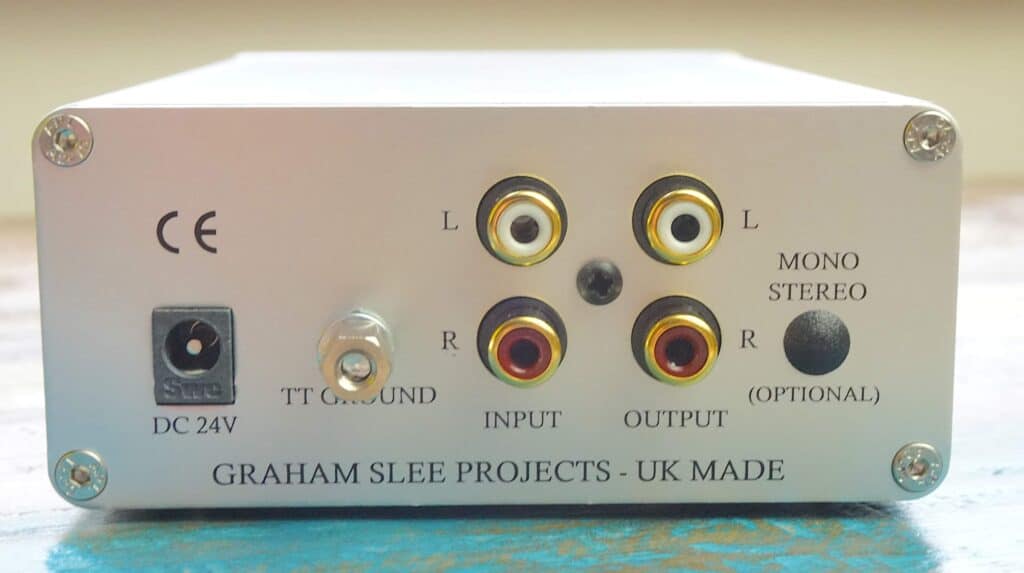
The risk is that the noise from the moving coil module might migrate all over the phono amplifier causing noisy issues and masking fine detail in the final sound output. How do you solve that issue?
By separating the moving coil module. By extracting the moving coil module, putting it into its own chassis and putting physical space between it and the moving magnet part. Turning the basic, integrated phono amplifier into a two box system, in effect.
The theory is, you separate the electronics, you isolate the same, you prevent that migration of noise, you enhance the detail in the final sound signal. That’s the idea.
So upgrading your moving magnet phono amplifier with a Step-Up also instantly turns your basic phono amplifier into a high-end model. A neat trick.
GOING UP?
That’s what the Graham Slee Elevator EXP promises to do. And what about the box itself? Well, let’s quickly look at that box shall we?
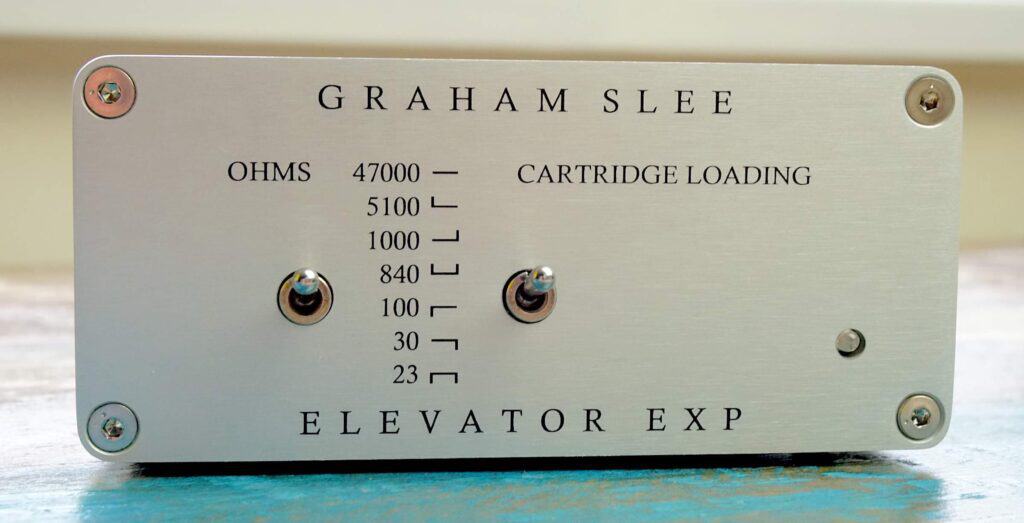
If you know Graham Slee products, you will already know the chassis because it’s the same one used on the Accession phono amplifiers. This not only keeps production costs down but it also produces a uniformity of style on the HiFi shelf. Which helps the overall aesthetic.
The rear of the unit features features single-ended sockets to connect to the moving magnet phono amplifier of your choice (it doesn’t have to be a Graham Slee product, of course) and your turntable. The front features two toggle switches and a list of load settings that are featured to match with the load setting of your cartridge. The toggle switches can be switched up, centre and down. To select the correct load setting, you need to hit the right switch combination.
The instruction sheet offers a useful guide and there is a front-mounted fascia code that provides visual clues but I still would have liked to have seen this guide clearly printed – in words of one syllable, so to speak – on the chassis itself because bits of paper can be lost very easily and some people may be confused by the front-fascia code image. I recommend, taking a copy or two and keeping those copies in secure locations.
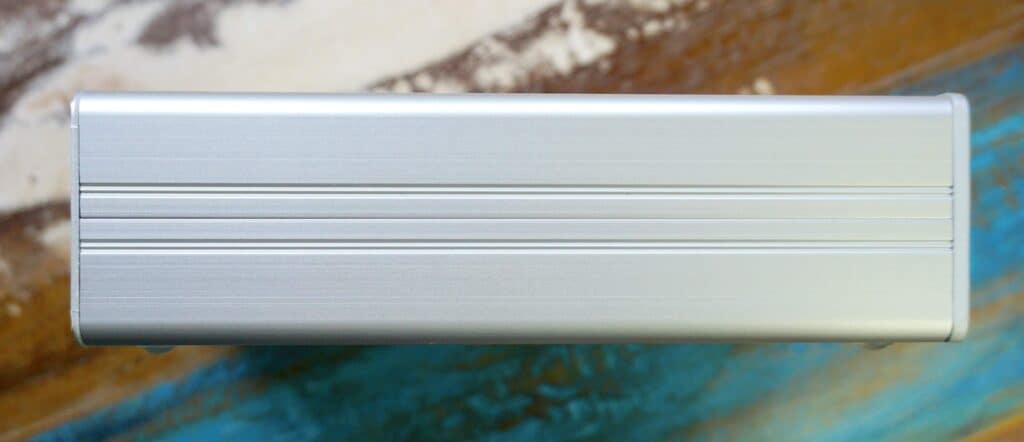
A sample combo, then? For a common 100 Ohm load, you flick the left toggle switch to the Down position and the right toggle switch to the Centre position.
IT’S NOT A TRANSFORMER
Oh and one more thing? This is not a Step-Up Transformer. There’s no familiar SUT acronym here. This is a Step-Up Amplifier…a SUA? I made the mistake of calling it a SUT without even thinking, as you might call a Dyson a Hoover, for example. Of course, technically? I was incorrect and Graham Slee takes time to tell you why the tech change was made and why transformers were left out of the picture. Read more abut the decision here.
And that’s the the tech part basically. So how does this Step-Up amplifier actually sound?
SOUND QUALITY
Playing Julie London’s smoky ballad version of Won’t You Come Home Bill Bailey from the Liberty album For the Night People, this track lays the sound bare. Apart from a rather delicate electric jazz guitar, all you hear is a close mic’d London, emoting all over the place.
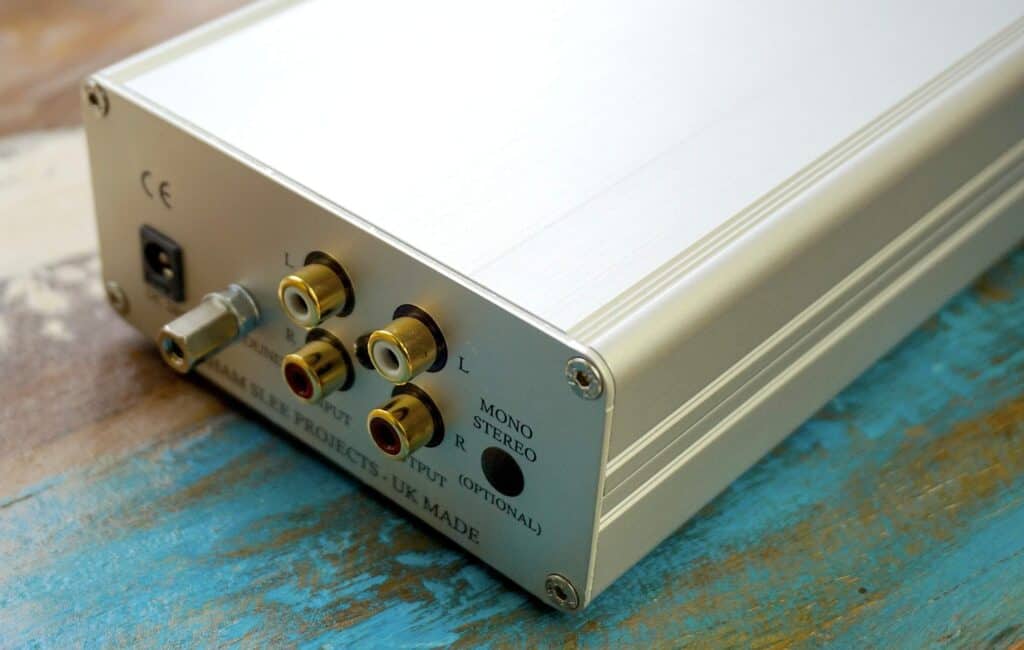
I also hooked the Elevator EXP up to the Graham Slee Accession moving magnet phono amplifier with a set of Tellurium Q Ultra Black interconnects. Over the top in price terms, the cables might be but I wanted to remove the connecting cables as a variable. I didn’t want to second guess myself and wonder if the cables were having an influence on what was going on.
And how does this duo sound? Calm. That’s my first impression of the Elevator XP/Accession combo in isolation. Calm. No rush. No panic. The mids sounded smooth and relaxed. Bass – and there was bass from the guitar – was solid yet never bloated or distorted. The vocal performance was easy and it flowed without effort. My urge was to click my fingers in a lazy Sinatra like fashion but I had run out of Jack Daniels, so I tapped a foot instead.
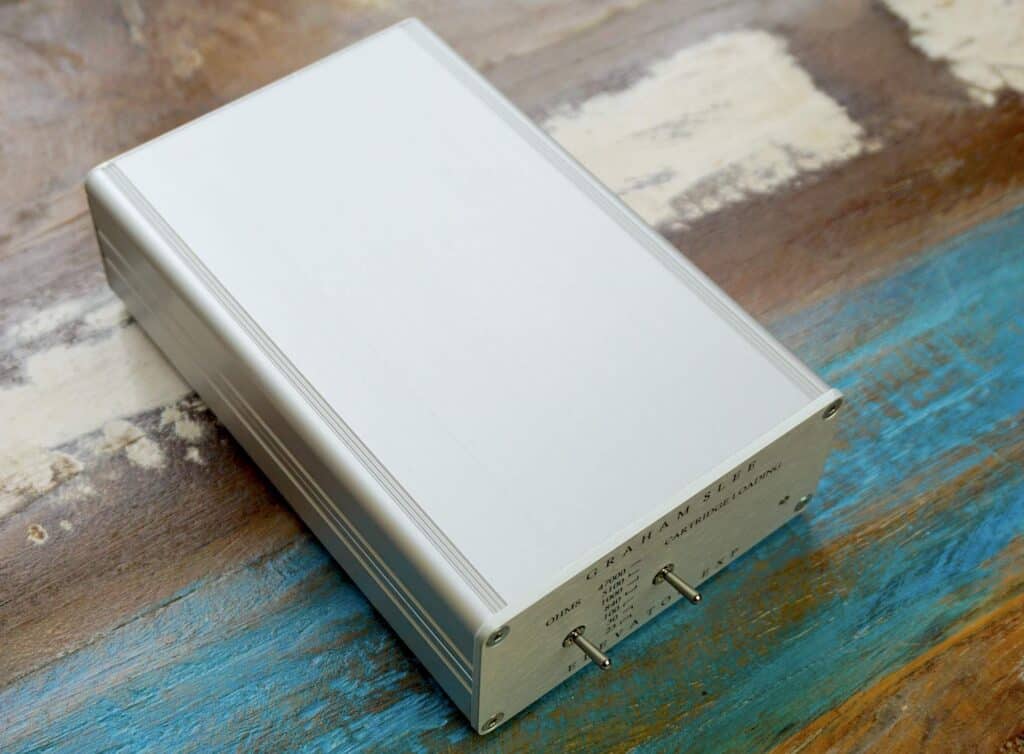
If the steady, relaxed, carefree motion of the Mississippi could be distilled into a chassis sporting single-ended connections, then it would have a Graham Slee logo on the front. That was the sound of the Elevator EXP.
vs ACCESSION MC
But what about a head to head with another Graham Slee product, the Accession MC? There’s no moving magnet module in the picture here, this is a specialist MC model so the Elevator EXP task is even greater, methinks.
Let’s remind ourselves that the specialist Accession MC costs £1,200 but the Moving Magnet Accession costs £936 and the Elevator EXP costs £640 so that’s a combined price of £1,576, £376 more. Tough call this one because we are talking about the same designer, same design ethos, same parts, same everything except the direction of the sound signal itself. And well, how do I put this?
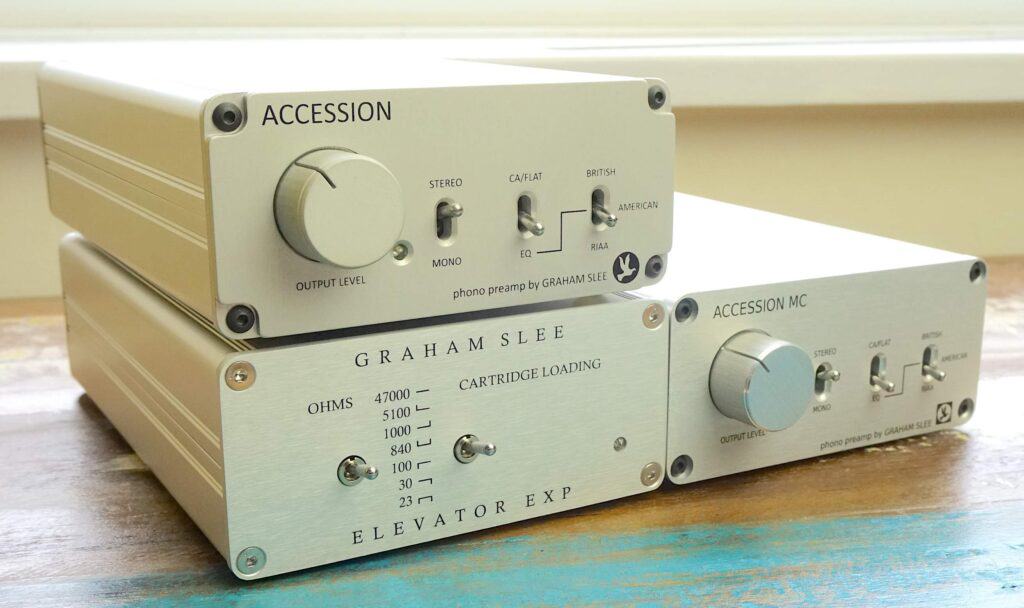
The Elevator EXP grabbed the sonic signal and added space and air to the mids, it added a sense of the snoozy to the London delivery, it added focus to both her voice and to the bass. It added improved diction to the lyrics. London, at one point ended a line with the word ‘out’. You really heard that letter ’t’ via the Elevator EXP. She added a little bit of emphasis via the Elevator EXP. An extra emotional push that was slightly muddied via the Accession MC.
If you’ve seen my review of the Accession MC you will know how much I love that integrated box but I tell ya, the isolated boxes of the moving magnet Accession and Elevator EXP is something else entirely. That noise floor does indeed drop, the detail floods in to fill the newly found space, the music and the vocals add tonal realism, the performance is so much more vital and immediate. Yes, the Accession MM and Elevator EXP cost more than the Accession MC but that extra cash is worth it, in my opinion.
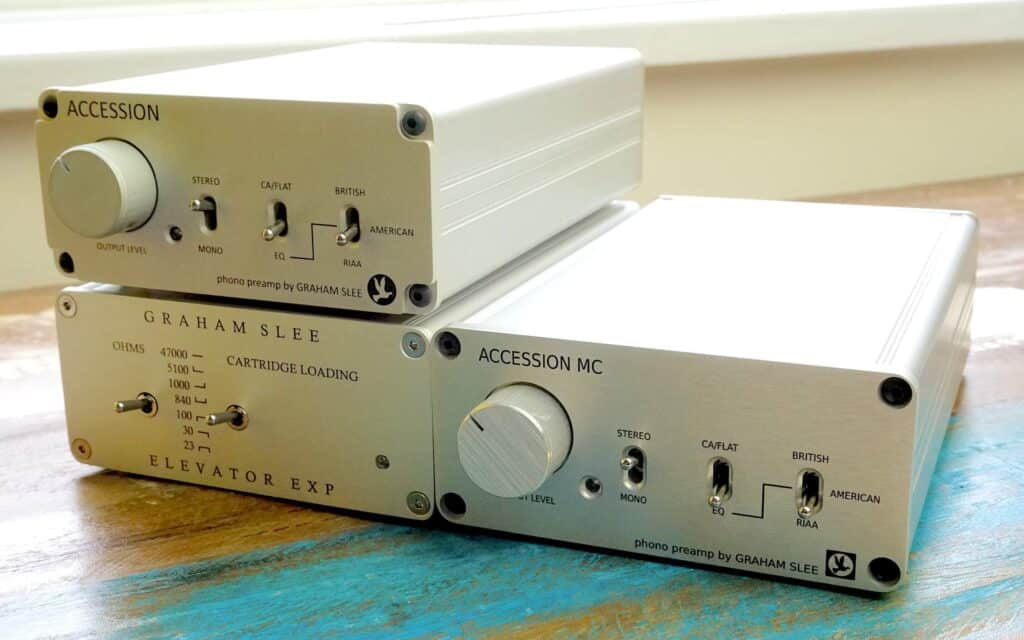
As an addendum, why should the Elevator EXP sound better than the Accession MC? The Accession MC is a specialist MC box, after all. I can only guess at the realities but I think the answer lies somewhere in the fact that the Accession MC contains switches for stereo/mono, extra EQ options, all of that extra board logic in the case and hence more generated noise. The EXP has none of that. It’s a pure, even bland, box that does one thing and one thing only.
vs TRICHORD DINO
As for this Elevator EXP/Accession combo versus a third-party integrated MM/MC unit like the Trichord Dino and a Dino that is fully upgraded with all the bells and whistles? Another UK product, another highly rated – by me – phono amplifier? As much as I love the Dino, as much of a fan as I am of that little box, the noise floor is higher, mids are not as crisp, there just isn’t the same degree of information on offer as I get from the Graham Lee, two-box combo.
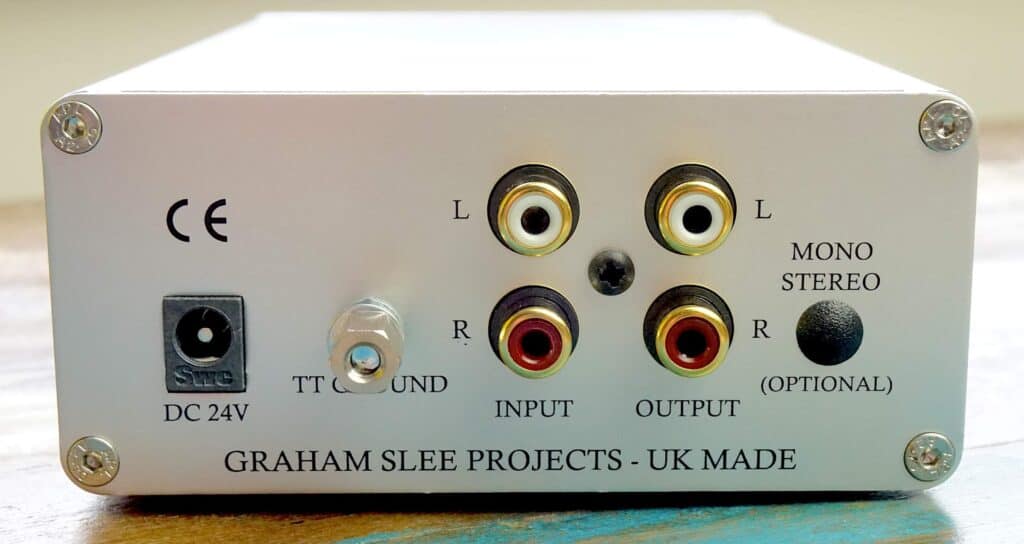
I tried other music too, of course, including lots of cheesy 70s pop songs like The Allessi Brothers Oh Lori in which a vibraphone popped out at me unexpectedly. I’d never really noticed that instrument before. It was always there, of course, but this time the vibes really made themselves known.
Then there was the classic hit single from the Climax Blues Band and Couldn’t Get it Right. Well the Elevator EXP certainly did, I have to say. The sheer complexity of the arrangement on this track again surprised me. The drums and secondary percussion, the shy organ right at both of the mix, everything was visible to the ear. Nothing was forced, every output was neutral, balanced, easy.
PSU1 ENIGMA
Adding upgraded PSU1 Enigma power supplies to both units, the Accession and the Elevator EXP really hiked the sound quality upwards.
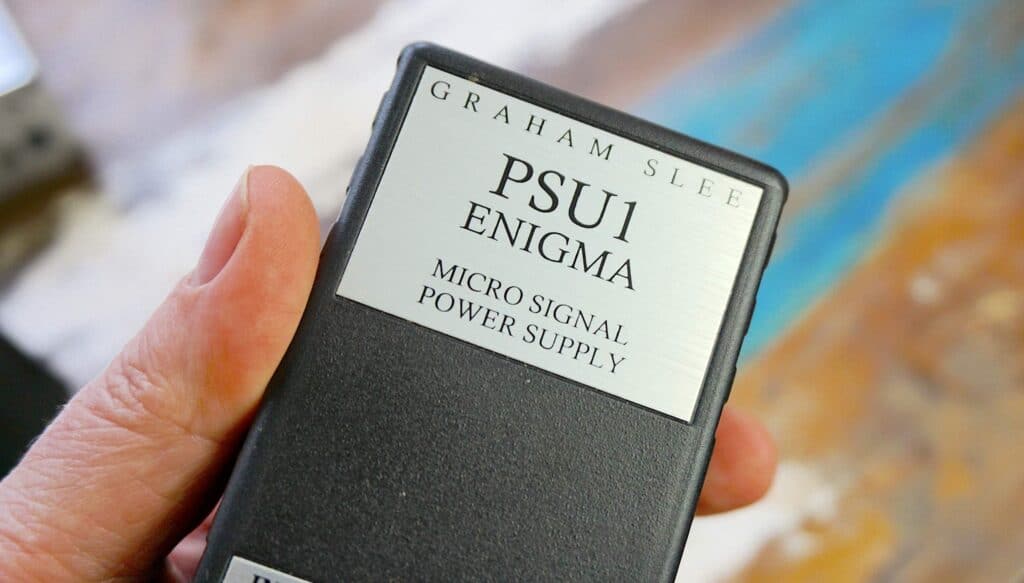
In fact, I was convinced I had just entered balanced mode, such was the smooth, even output, a further drop in noise, enhanced detail right across the soundstage and a basic increase in confidence in terms of the performance. The performers sounded like they are fresh and on the ball and raring to go, such was the enhanced detail and precision of the output.
CONCLUSION
I explained earlier that adding an Elevator EXP to your favourite moving coil phono amplifier results in a two-box system but, of course, that’s not the case at all. Because each unit arrives with its own separate power supply, adopting the Elevator EXP into your life results in a four-box phono amplifier, maximising isolation and sound quality to boot. And my goodness that sound is startlingly good, especially if you go that one step further and upgrade the power supplies to the Enigma variation. Did you see what I did th…? Oh, never mind.
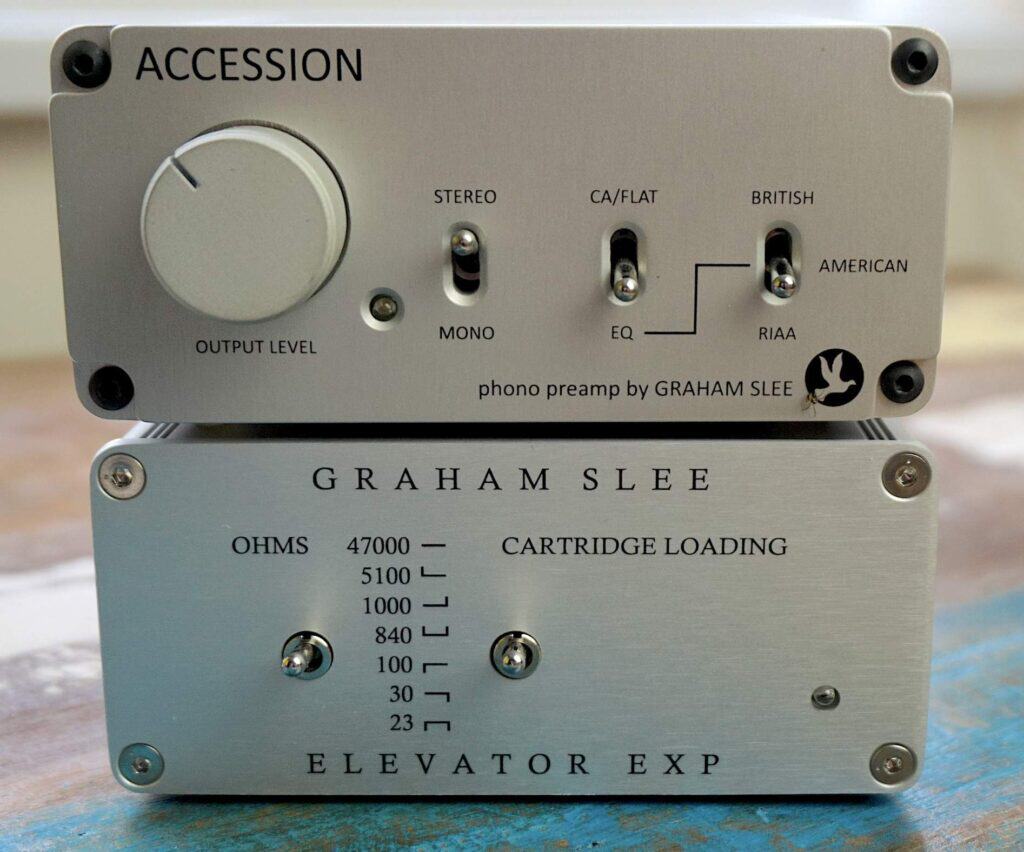
In short? It might take up a larger footprint on your shelf but, my goodness, its worth it if sound quality is what you’re after and at this price, you can’t beat it.
GRAHAM SLEE ELEVATOR XP STEP UP AMPLIFIER
Price: £640 (PSU1 Enigma Power Supply £200)
Website: www.hifisystemcomponents.com
GOOD: low noise, balanced output, detail, spacious soundstage, midrange focus
BAD: large footprint, loading reference
RATING: 9

Don’t forget to check out my Patreon Page at www.patreon.com/audiophileman, for exclusive postings and more!]
REFERENCE
Origin Live Sovereign turntable
Origin Live Enterprise 12″ arm
Icon PS3 phono amplifier
Aesthetix Calypso pre-amp
Icon Audio MB845 Mk.II Monoblock Amplifiers
Blue Horizon Professional Rack System
Harmonic Resolution Systems Noise Reduction Components


